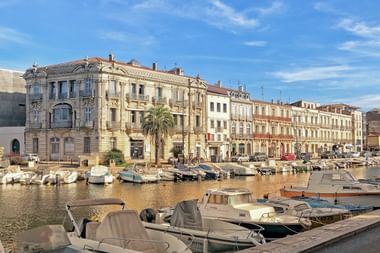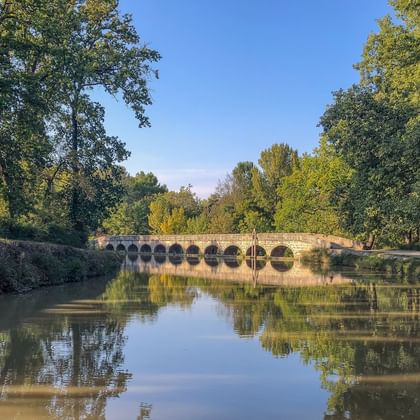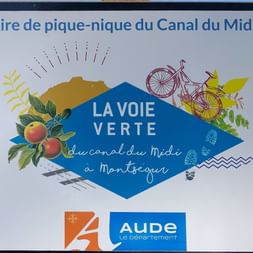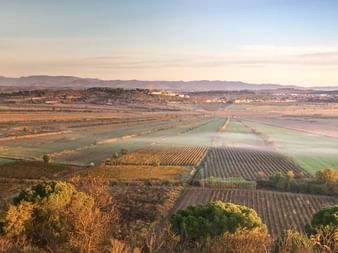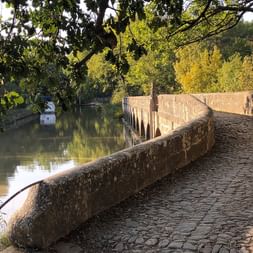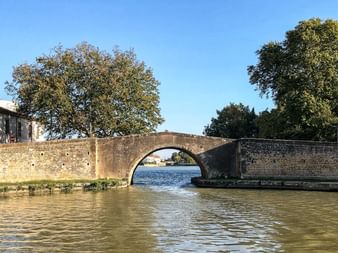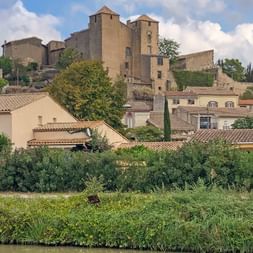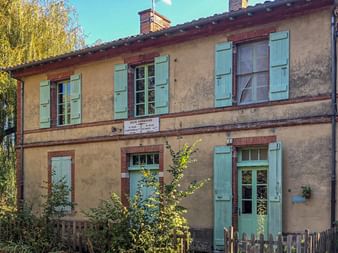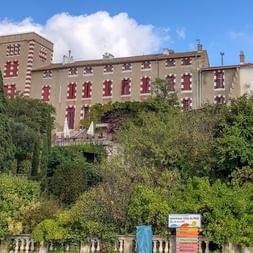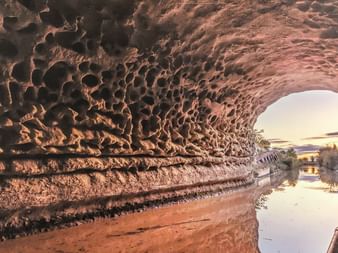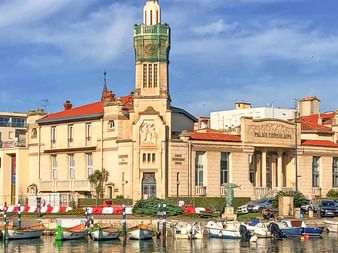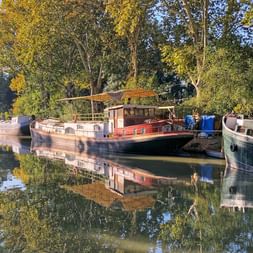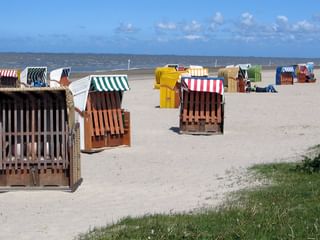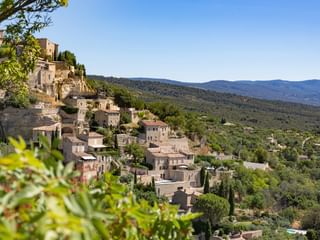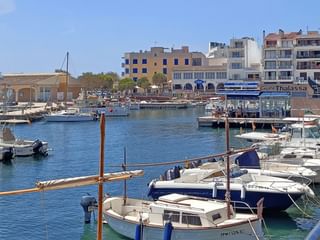A channel like no other
The Canal du Midi is one of our favourite cycle tours in France.
On the Canal du Midi, you can experience the original France. Then as now, the canal winds its way through marvellous landscapes. Trees line the banks and provide shade as you cycle along the paths at a leisurely pace. You follow the river - almost like a meditation.
We will be happy to give you an up-to-date insight into the nature of the route and invite you to get to know romantic and authentic France.
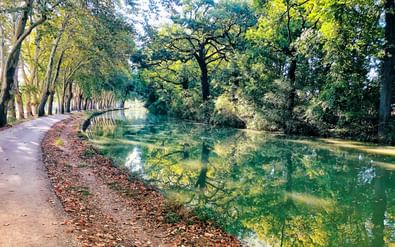
Canal du Midi
A lot has happened on Europe’s most famous canal, the Canal du Midi, which has been connecting Toulouse to the Mediterranean since 1681 along a length of 240 km. Now our station manager Robert and our bicycle mechanic Herms have been able to see for themselves. Both of them rode the idyllic route along the canal in early October to check it out.
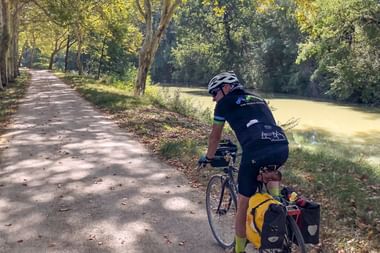
It is mid-autumn, now only the remaining plane trees on the Canal du Midi are getting their autumn colors, the wine has been harvested, the sun of the Midi is giving everything again, 26 degrees, ideal cycling weather. Robert Goldberg, tailwind tour guide for the Canal du Midi, has met with his colleague Herms Preuss, a bike mechanic, at 11.30 am at the Gardouch Lock, a good 35 kilometers from Toulouse.
Herms comes from Toulouse, Robert started in Castelnaudary. The old treidel paths on the Canal have been thoroughly renovated, the mechanic, a cycling enthusiast, is curious and has a longing for the south of France. Meeting point 11.30 am at the Gardouch Lock. Unfortunately, the popular lock bistro has closed in the off season, but a surprise awaits them opposite: The cultural café La Minoterie has just reopened, young women sell regional products there, the father of one of the women stands at the espresso machine.
To your great delight - and certainly that of our guests - the cycle path has been almost completely renewed and now offers pure cycling pleasure. So you can unwind on your cycle tour and enjoy the beautiful landscape, where time seems to stand still.
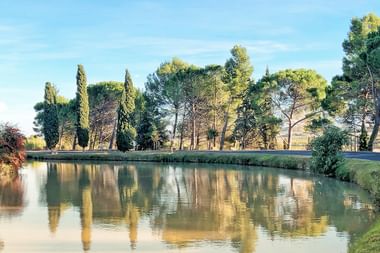
After another 15 kilometres, Castelnaudary is reached as the first stage. The cyclists cycle around the largest harbour basin on the Canal; for the French, Castelnaudary is the epicurean pilgrimage site for cassoulet, a bean stew with duck. The 65 kilometres or so are asphalted up to the watershed, the last bad stretch of towpath is now well gravelled - the alternative route on a small side road can be cancelled.
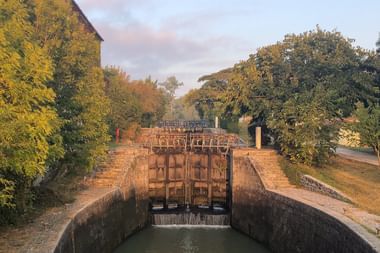
Castelnaudary - Carcassone is the next stage, the towpath was also thoroughly reworked here in 2023, solid gravel, two-way traffic and overtaking is now possible. This is the section with the most locks on the canal, with a total of 64 écluses equalising the differences in height along the canal. It is quiet on the canal, although there are still a lot of bikers out and about in Golden October, but not many leisure skippers. The silence is interrupted when Edith Piaf sings ‘La Foule’ for us at disco volume - Philippe, lock keeper at the Écluse de Béteille, no longer has many customers and is practising savoir vivre: ‘Est-ce que vous prenez un café - do you want a coffee,’ he invites us. Next to the coffee table at the lock is a giant loudspeaker.
You should make time for Carcassone: Certainly for the famous fortified town of La Cité high above, but also for the old Roman legionary quarters in the old town centre, where you can do some good shopping.
Today we want to go as far as the neighbouring villages of Homps-Olonzac, the first of which was the shipping port for the wine that the Minervois winegrowers produced in Olonzac. From Trèbes, today a popular canal port for holidaymakers, we take the beautiful alternative route via Rustiques and Badens with its wonderful panoramic views of the Montagnes Noires and the Corbières. From Marseillette, we pass the drained lake Ètang de Marseillette, vineyards and orchards and a rice harvest that can be marvelled at. This is the second most famous lock on the canal: At the Écluse de L'Aiguille, Joell Barthez welds whimsical metal objects, Jean Tinguelly sends his regards; in retirement, the former lock keeper has even more time for this.
A highlight of this trip is certainly the famous fortified city of Carcassonne. The medieval Cité rises majestically and can be seen from afar. Stroll through the beautiful old town and follow in the footsteps of bygone times through the picturesque little alleyways.
The most beautiful villages lie between Homps and Béziers. High above the Canal Argens-Minervois, Paraza and Ventenac with their chateaux, the old mail boat station Le Somail, whose old buildings have been preserved in their original state. Many cafés and restaurants, the Librairie Ancienne, the antiquarian bookshop, which is larger than the bookshops in Paris and offers 50,000 books in all languages. By the way, the cyclists took the stage more or less in passing, the section here is completely newly asphalted, a very good rolling surface up to the canal crossing at Port La Robine.
The route continues together to Béziers, via the beautiful panoramic alternative route via Ouveillan with views as far as the Pyrenees with its 3,000 metre peaks. From the canal crossing to Bèziers, the cycle path is also newly built, but the route is meditatively boring: no café, no bistro, at 56 kilometres the longest section without locks on the canal up to the famous Écluse de Fonserannes, the nine-stage lock staircase before Bèziers. The tailwind cyclists have cycled a double stage and arrive late at the spectacular lock complex, which was modernised years ago as a leisure centre with a café, park, tourist office and lock tours. The spectacle is a must-see. As is the view from St Nazaire Cathedral high above Béziers, from the mountain ranges to the Mediterranean.
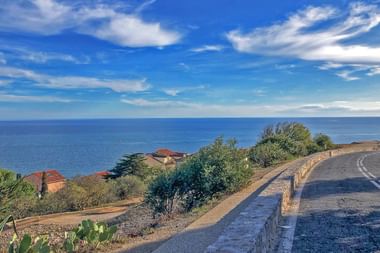
The last cycling stage to Sète is over 50 per cent asphalted. Pine trees now replace the newly planted white poplars and oaks, which you can smell from afar. In the marshes of the nature reserve near Portiragnes, you may be lucky enough to see flamingos, just like in the Camargue. How about a short stopover in the small harbour town of Marseillan? In the Noilly Prat house there is a guided tour of the cellar followed by a tasting. Here you can learn all about the production of the legendary vermouth. In this case: shaken, not stirred. The Canal du Midi ends in the Étang du Thau, famous for its oyster beds. The last 15 kilometres are a parade ride, with the sea within reach on the right - it cries out to be jumped in.
This varied journey ends in the Venice of Languedoc, the beautiful town of Sète. Another walk up to the fishermen's quarter, the Quartier Haut, from where you have a breathtaking view of the canals and harbours.
The route continues past interesting medieval towns, such as the birthplace of Pierre-Paul Riquet, the builder of the Canal du Midi, Beziers and the old episcopal town of Narbonne. The route continues towards the sea.
How about a short stopover in the small harbour town of Marseillan? At Noilly Prat, you can take part in a guided tour of the cellar followed by a tasting to learn all about the production of the legendary vermouth. This varied journey ends in the Venice of Languedoc, the beautiful town of Sète. If you wish, you can take a dip in the Mediterranean or walk up Mont Saint Clair for a breathtaking view over the beautiful bay!
Au revoir et à bientôt!
